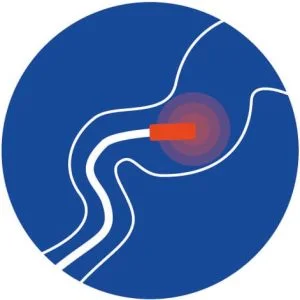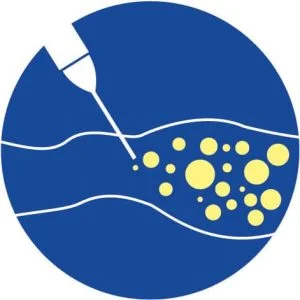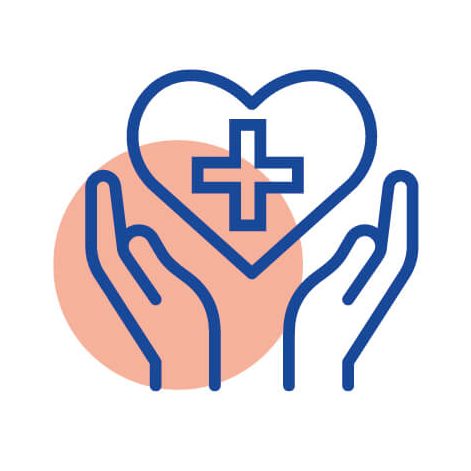Perth's Leading Specialist in the Treatment of Varicose Veins
Dr Luke Matar | MBBS, FRANZCR, FACP
What is Radiofrequency Venous Ablation?
Radiofrequency Venous Ablation (RfA) is a minimally invasive treatment for varicose veins that uses radiofrequency energy (instead of laser energy) to heat up and damage the wall inside a vein.
RfA is similar to endovenous laser ablation (EVLA) in many ways but there are a number of differences between the two systems. They are similar in that both systems do a very good job of ablating saphenous veins and result in far better recovery and longer-term outcomes than surgical vein stripping or sclerotherapy. Endovenous laser ablation is however the leading treatment on the market and is what we recommend to all patients that are suitable.
Read MoreWhy We Recommend
EVLA Over RfA
Better Technology
At The Vein Clinic, we use the market’s newest and most advanced technology with laser capability at 1480nm compared to 980nm seen on older machines used at other clinics. This higher frequency is associated with less pain and faster recovery.
More Types Of Veins Treated
EVLA, in the hands of a highly experienced practitioner like Dr Matar, is able to treat more veins than RfA. Typically you can only treat the main saphenous vein with RfA, whereas EVLA can target accessory saphenous veins, branch veins, and perforator veins.
Smaller Entry Hole
The cannula used to insert the EVLA laser fibre is smaller than that used to introduce the RfA fibre; meaning the entry site scar will be extremely minimal and barely noticeable.
Laser Vs Radiofrequency
| LASER | RADIOFREQUENCY | |
|---|---|---|
| ANAESTHETIC | Local tumescent | Local tumescent |
| HEAT | 1000 degrees C | 120 degrees C |
| ENTRY HOLE | Small (16g IV cannula) | Large (7 French introducer) |
| SPEED | Slow (7cm in 70 seconds) | Fast (7cm in 20 seconds) |
| SPECIAL ROOM REQUIREMENTS | YES | NO |
| PROTECTIVE EYEWEAR | YES | NO |
| $$$ CAPITAL OUTLAY | YES | NO (not often) |
| SAFE FOR BEGINNERS | NO | YES |
| VEINS TREATED | Many (expert user) Saphenous, accessory vein Branch veins, perforator veins | Few Saphenous veins Perforator (special stylet) |
Our Approach to Treatment
At the Vein Clinic, we combine different treatments at varying stages so that we can achieve optimal medical and cosmetic improvements. Your unique vein conditions will influence the varicose vein treatments we use.
Stages of Vein Treatment
Stage 1
Treatment of large malfunctioning veins (trunk)

Endovenous Laser Treatment (EVLA) to great, small, and/or anterior accessory saphenous veins. 60 minutes
Stage 2
Treatment of large varicose veins (branches)

Phlebectomy removal of larger bulging varicose veins 90-120 minutescombined with

Ultrasound-Guided Foam Sclerotherapy (UGFS) on smaller veins. 30 minutes
Stage 2
Treatment of small varicose veins (branches) if required

Extra sessions of UGFS to close smaller veins if identified as required at post-treatment follow-up scan 30 minutes
You may not require this stage.
Stage 3
Optional treatment surface veins (leaves)

Usually done by Microsclerotherapy 30 minutes
Most patients require multiple treatment sessions to remove spider veins.
Why Do Some Surgeons Still Use Radiofrequency Ablation?
Dr Matar’s personal belief is that vascular surgeons often prefer RfA over endovenous laser ablation (EVLA), not because of patient care concerns but for the following reasons:
Easy to Learn
The operation of the RfA system requires far less technical skill than the laser system. The RfA catheter is very forgiving and if the tumescent needle hits the catheter it will not damage it.
Surgeons generally do not have high levels of experience with ultrasound and ultrasound-guided procedures so this technology is generally “safe” in their hands. In contrast, laser fibres may break and serious consequences can occur if inexperienced users attempt to do EVLA.
Speed
The ablation after tumescent anaesthesia with RfA can be more than 3x faster than laser, i.e. 2 minutes vs 7 minutes. This difference is of little concern for most phlebologists but for some busy surgeons, every second counts and this could mean being able to treat one extra patient per day.
Financial
RfA companies often supply the Rf generator free of charge and surgeons are only charged for the Rf fibres. This means the surgeon that occasionally dabbles in endovenous ablation can avoid the high-cost outlay that the dedicated phlebologist has when purchasing a laser.
Room Set-Up
Special laser safety precautions and safety eyewear are not required for RfA, meaning it is easier and cheaper to set up a treatment room that uses RfA compared to one that uses a laser.
The success rate of RfA treatment is reportedly slightly lower than that of endovenous laser ablation. There is also a slightly higher reported rate of phlebitis, hyperpigmentation, and paraesthesia following RfA compared to laser.
Preferred Minimally Invasive
Varicose Veins Treatments
Frequently Asked Questions
Why do I have varicose veins?
Most varicose vein issues are hereditary. If you have one parent with varicose veins your risk of having them is around 65%. If both parents are affected the risk rises to approximately 90%. Another main risk factor for women is pregnancy, with the risk increasing with each additional pregnancy. Standing occupations such as hairdressers, nurses, and chefs also have a high risk of varicose veins as gravity puts pressure on the veins and weakens them.
How do I prevent varicose veins?
Once varicose veins are present, they will not resolve of their own accord. Measures to reduce the rate of progression include maintaining a normal healthy weight and going for regular walks of 20-30 minutes per day. Reducing the length of time spent on the feet in a stationary position may help and alternating between standing and sitting positions during the day will also reduce the pressure on the veins.
What will happen if I don’t treat these veins?
Generally, without treatment, varicose veins will get progressively worse over time. Symptoms may occur such as heaviness, ache, pain, and tiredness in the legs towards the end of the day. Further progression may result in leg swelling, itch, skin discolouration, and eventual skin ulceration. Blood clots related to superficial venous thrombosis may also occur in severe cases and can lead to the more serious condition of Deep Vein Thrombosis.
What treatment options exist?
Outdated, old-fashioned options such as surgical stripping are rapidly becoming obsolete due to poor long-term success, with recurrence rates of up to 50%. Modern treatment options include endovenous laser ablation, sclerotherapy injections, and ultrasound-guided ambulatory phlebectomy. In many cases a combination of different treatments will give the best long-term results.
Will the veins come back after treatment?
Many people are concerned that the treatment will be of limited value because the veins will just come back. This was certainly the case in the days of surgical stripping with a 50% recurrence rate at 5 years; however, using the latest minimally invasive techniques, we can reduce the risk of recurrent varicose veins to the baseline risk of approximately 3% per year.
What is the downtime following treatment?
This depends on the type of procedure performed and the severity of the veins being treated. Modern treatment with laser can involve no time off work and approximately two weeks off heavy gym work and four weeks off international travel.
Get In Touch
Please send us an email and we’ll be in contact very soon or alternatively, call us on (08) 9200 3450.
If you are unsure of what vein condition you may have, assess your legs with our online tool.
If you are looking for cosmetic spider vein treatment only, please click here.









